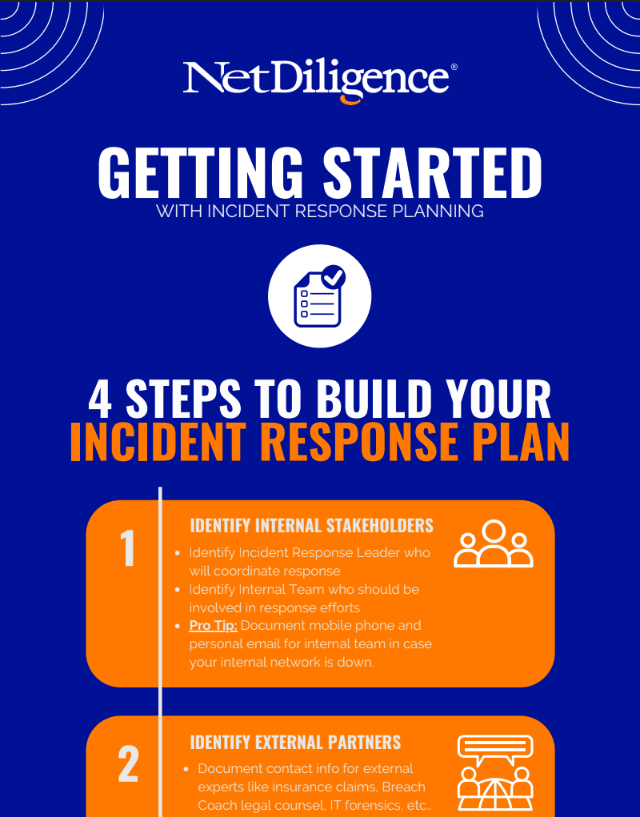As of mid-2024, cyber attacks had increased 30% year-over-year. Consequently, data breaches have been on the rise. Yet despite surging cyber threats, too many organizations act as though they think themselves invulnerable.
Experts report fewer than half of companies (45%) have cyber incident response plans. Among companies that do, as many as one-third don’t regularly test them. When breached companies haven’t adopted a proactive security posture, they tend to respond more slowly and less effectively, incurring greater financial and reputational damage.
Knowing how to create an incident response plan (IRP) is as critical a skill today as time management or data analysis. Developing and executing an effective incident response plan can be the difference between operational continuity and utter chaos, between successful recovery and organizational devastation.
Read on for tips to help organizations in creating an incident response plan and carrying it out.
What is an Incident Response Plan (IRP)?
Before discussing how to create an incident response plan, let’s review exactly what one is.
A cyber or IT incident response plan is a comprehensive set of instructions about what to do and when during a cyber attack, data breach, or other cybersecurity incident and its aftermath.
While a cyber incident always creates a certain degree of chaos and confusion, a strong IRP provides a road map to follow. It clarifies the roles and responsibilities of the organization’s incident response team and outlines practices and procedures in detail.
Having a detailed, actionable IRP that team members can access from anywhere and at any time is crucial to minimizing the severity of costs and damages associated with cyber incidents. It helps minimize damage, protect sensitive information, comply with regulatory requirements, and maintain stakeholder trust.
“Effective incident response is a key component to mitigating the impact from cybersecurity incidents,” says Eben Kaplan, Director of Advisory Services at CrowdStrike. “In the best case, a strong response reduces the impact of an incident to almost zero. In the worst, a poor response amplifies the effects of the incident and does more damage to the organization than the attacker.
“A plan doesn’t guarantee a good response, but in our experience, the difference between organizations that have documented what they need to do and those that have not is night and day. Even if they don’t follow every letter, organizations that have plans and have exercised them know what needs to happen and who needs to do what as the chaos of a cyber incident unfolds.”
What Are the Elements of an Incident Response Plan?
An optimal cyber incident response plan covers preparation, detection and analysis, containment, eradication and recovery, as well as post-incident activity.
Specifically, an IRP should:
- Define roles, responsibilities, and contact information of internal incident response team members. Clarifying these details ensures information flows smoothly, preventing misinformation and misunderstandings, and establishes accountability.
- Structure response sequences for contacting a breach coach lawyer and an IT forensics team. The breach coach lawyer provides legal guidance on regulatory compliance, ensuring the organization responds appropriately while minimizing its legal liability. The forensics team investigates the source and scope of the breach and secures any compromised data.
- Outline containment strategies and eradication and recovery steps. Clear steps will help limit damage and restore systems and services.
- Specify data breach notification procedures. These procedures detail how to inform affected parties—timelines, templates, and methods used.
- State internal and external communication protocols. A strong communication plan is essential for informing all stakeholders (including employees, customers, and vendors), contacting law enforcement, and managing public perception.
- Lay out a post-incident review process. Assess the response, identify lessons learned, and update the plan accordingly to keep your organization ready for future incidents.
Tips for Developing an Incident Response Plan
If your organization needs guidance about how to create an incident response plan, follow these steps:
- Assess your current cybersecurity posture. Evaluate your existing security controls and identify potential vulnerabilities.
- Establish your dedicated incident response team. This team will be responsible for executing the IRP and should include representatives across various departments who can make decisions swiftly during an incident.
- Develop incident categories. These categories classify potential threats based on their severity and impact and help determine appropriate response strategies for each type, ensuring effective allocation of resources.
- Create response procedures. Document steps for detection, containment, eradication, and recovery in each incident category. Ensure these procedures are easily accessible to all team members and regularly updated to reflect changes in technology or organizational structure.
- Conduct training and drills. Regularly train your response team on the IRP and conduct simulation exercises to test its effectiveness. These drills help reinforce roles and responsibilities, improve team coordination, and identify areas for improvement.
Three Tools for a Better Incident Response Process
Don’t be caught without a plan. Several helpful services simplify your incident response planning. Here are three tools we recommend:
- Breach Plan Connect® (BPC) is a one-stop, cloud-hosted solution featuring an intuitive IRP template any organization can quickly and easily customize. BPC has been updated with new incident response playbooks that include tactical guidance to IT and Operations for common security incidents like ransomware attacks, business email compromises, and more. BPC’s mobile app syncs with the desktop platform, allowing you to access your plan from anywhere at any time during a crisis.
- Surefire Cyber is a tech-enabled, one-stop solution for facilitating breach response. It connects your company with your breach coach, insurance carrier, and broker; connects clients and carriers to response products and services; and provides a real-time overview of response activities.
- CrashPlan is a scalable backup solution for remote and hybrid workplaces. It stores backups on the hybrid cloud, for a fast, seamless data recovery process. With minimal downtime and business interruption, your organization can return to normal operations as soon as possible.
Complete the form below to download the 4 Steps to Build Your Incident Response Plan tip sheet from NetDiligence.





